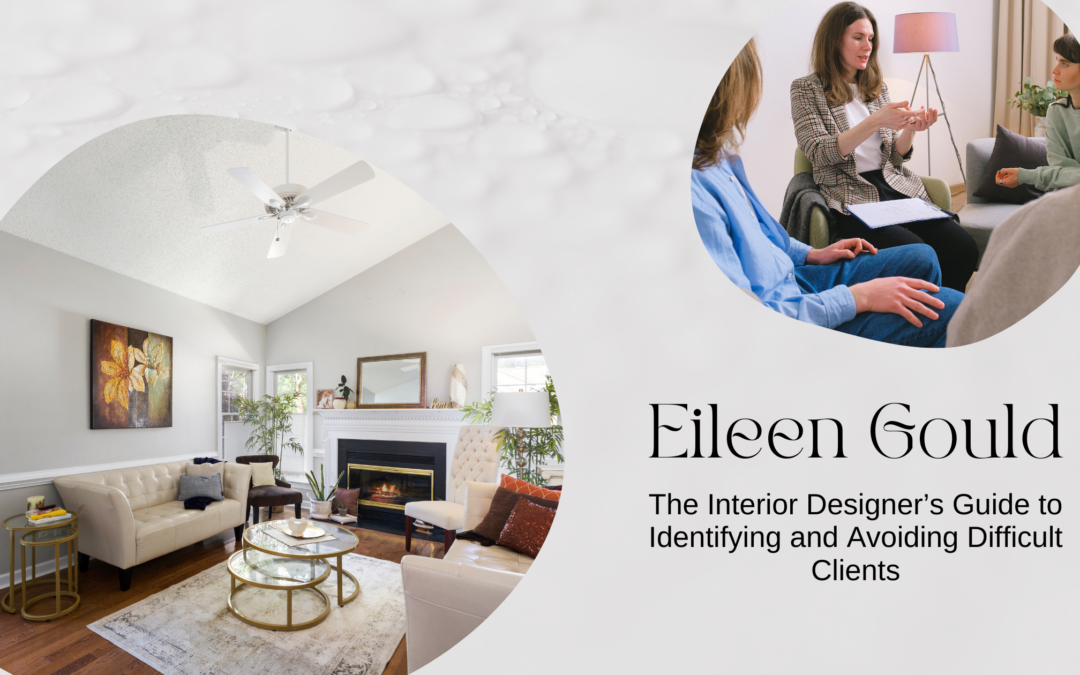Interior design is a creative and rewarding profession that allows you to transform spaces and improve people’s lives. However, not every client is easy to work with. Some clients can be demanding, disrespectful, unrealistic, or indecisive, making your job harder and less enjoyable. How can you spot and avoid these difficult clients before they ruin your reputation and sanity? Here are some of the common red flags to look out for when choosing an interior design project. The client doesn’t have a clear vision or budget:
If the client can’t articulate what they want or how much they can spend, it’s a sign that they haven’t thought through the project enough. To ensure the successful delivery of a project, it’s important to establish introductory meetings before finalizing and confirming if you will be working with them. This can help to avoid endless revisions and scope creep.
The client has unrealistic expectations or timelines:
If the client wants, you to work miracles with a shoestring budget or a tight deadline. In that case, it’s a warning that they don’t understand the complexity and value of your work. It’s better to educate them upfront about what’s possible and what’s not and set realistic expectations.
The client is rude or disrespectful:
If the client doesn’t respect your expertise, boundaries, or time, it’s not worth working with them. You deserve to be treated professionally and kindly, and you shouldn’t have to tolerate abuse or manipulation.
The client changes their mind frequently or doesn’t make decisions:
If the client can’t make up their mind or keeps changing their mind, it can be frustrating and costly for you. It’s important to have a clear process for decision-making and to communicate it to the client so that they understand the consequences of indecision or flip-flopping.
The client has a bad reputation among interior designers:
If the client has a history of mistreating designers or not honoring contracts, it’s a red flag. It’s important to do your due diligence and check their references, or at least have a candid conversation about your concerns.
The client doesn’t have a portfolio or inspirational images:
If the client can’t show you what they like or dislike, it can be hard to design a space that meets their needs and tastes. It’s important to ask the client to share some images, whether from magazines, Pinterest, or their own portfolio, to get a sense of their style.
The client doesn’t inspire you or challenge you creatively:
If the client has a bland or generic style or wants you to copy someone else’s work, it can be hard to feel motivated and fulfilled. Working with clients who appreciate your creativity and skills and give you room to experiment and innovate is important.
How to run away from difficult clients
If you notice any of these red flags in a potential client, it’s best to run away from them before you commit to a project that will make you miserable. Here are some tips on how to politely decline a difficult client:
- Be honest and professional. Explain to them why you are not interested in working without being rude or offensive.
- Refer them to another designer who might better fit them, if possible.
- Thank to them for taking interest in your services, and wish them well.
- Don’t feel guilty or pressured to accept a project that doesn’t suit you.
- Trust your instincts and intuition.
Working with difficult clients can be stressful and harmful to your interior design business and mental health. By noticing the red flags early on and running away from them, you can save yourself from headaches and heartaches and focus on finding clients who value your work and respect your boundaries.


